12 Knives Forged With Rare and Exotic Materials
Knives made with uncommon materials carry a sense of individuality that sets them apart. Bone, horn, and Damascus steel are just a few that bring texture and tradition into the world of blades. These elements influence not only the look but also the way a knife feels in the hand. They often reflect craftsmanship passed down through generations.
This post may contain affiliate links, which helps keep this content free. Please read our disclosure for more info.
Yemenite Jambiya with Saifani (Rhino Horn) Hilt
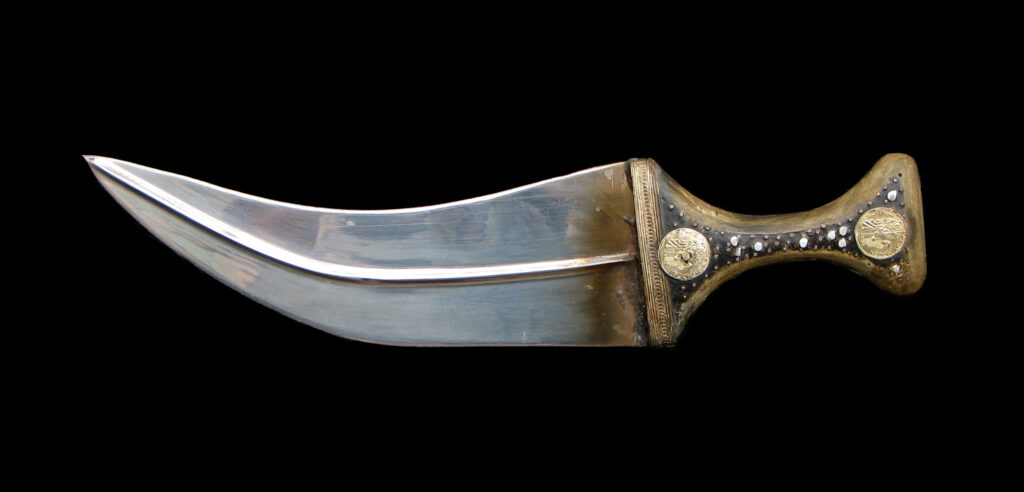
The Yemenite jambiya has been produced for centuries, most notably from the 15th to the 19th century. Its blade is often steel or wootz, while the hilt is carved from rhino horn called saifani. This makes the knife different from typical steel and wood knives because of its rare translucent horn handle. Many were ceremonial, worn as a sign of status and heritage. Well-kept pieces with horn and metal detail can reach values of $500 to $2,000, while museum-quality ones may exceed $300,000.
Collectors view the jambiya as both a weapon and cultural emblem. The horn’s natural grain and translucence make each piece unique. Unlike mass-produced knives, these require careful preservation of organic material. The presence of original sheath or gem inlay increases market value significantly. Today, they are mainly found in private collections and auction houses.
Laguiole en Aubrac Horn Handle Knife
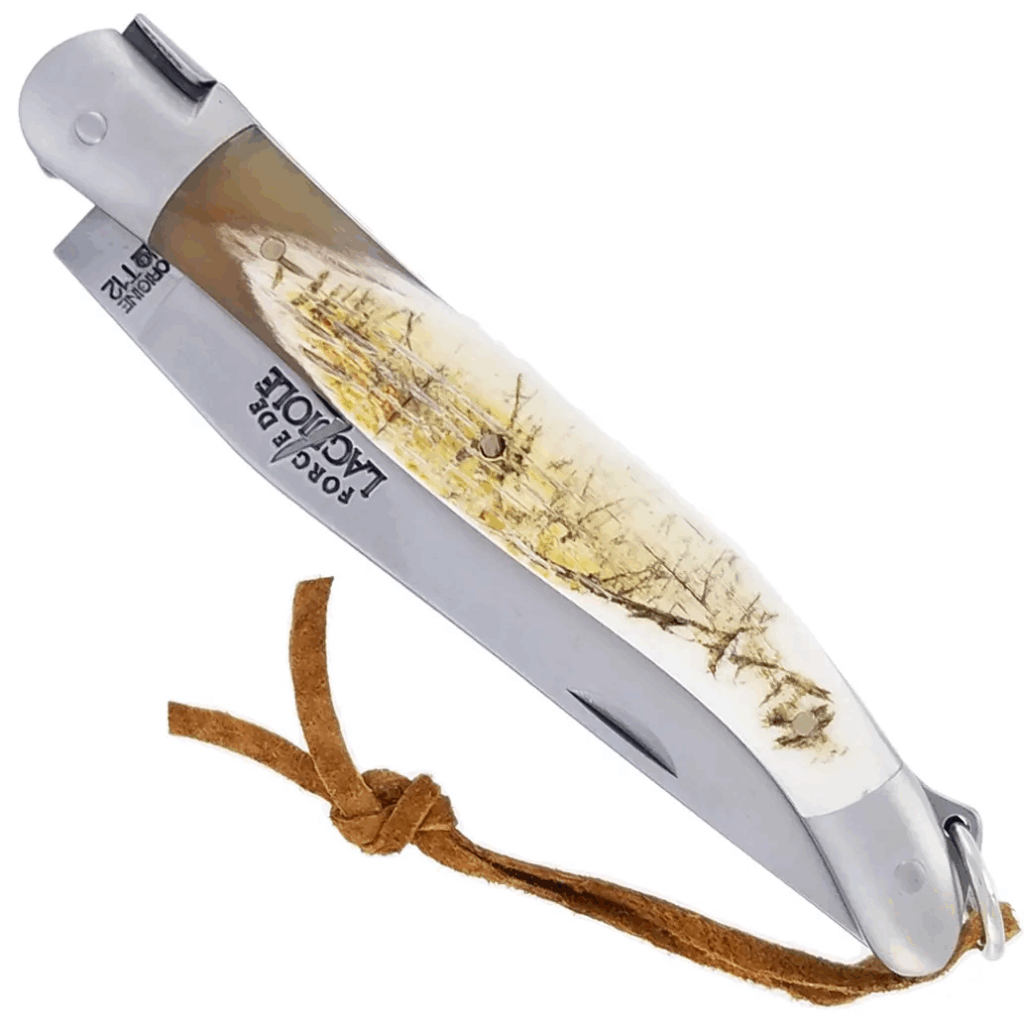
Modern Laguiole knives from France are made with buffalo horn handles and blades often crafted from Damascus steel. They differ from common kitchen knives through the visible Damascus patterns and natural horn handles. These knives are typically folding with elegant inlays and decorative bolsters. Produced in the late 20th century through today, they are popular among collectors and chefs. Market value ranges from $150 to $450 depending on the horn and steel quality.
The buffalo horn used has natural striations, which makes each knife unique. Unlike synthetic handles, horn can warp slightly, giving it a character that collectors admire. Damascus blades are layered, adding both durability and distinct surface designs. These knives are valued for the harmony between tradition and artistry. Well-preserved examples remain desirable for both everyday use and display.
Lion Steel Opera 8800DMN Folding Knife with Ram’s Horn Handle
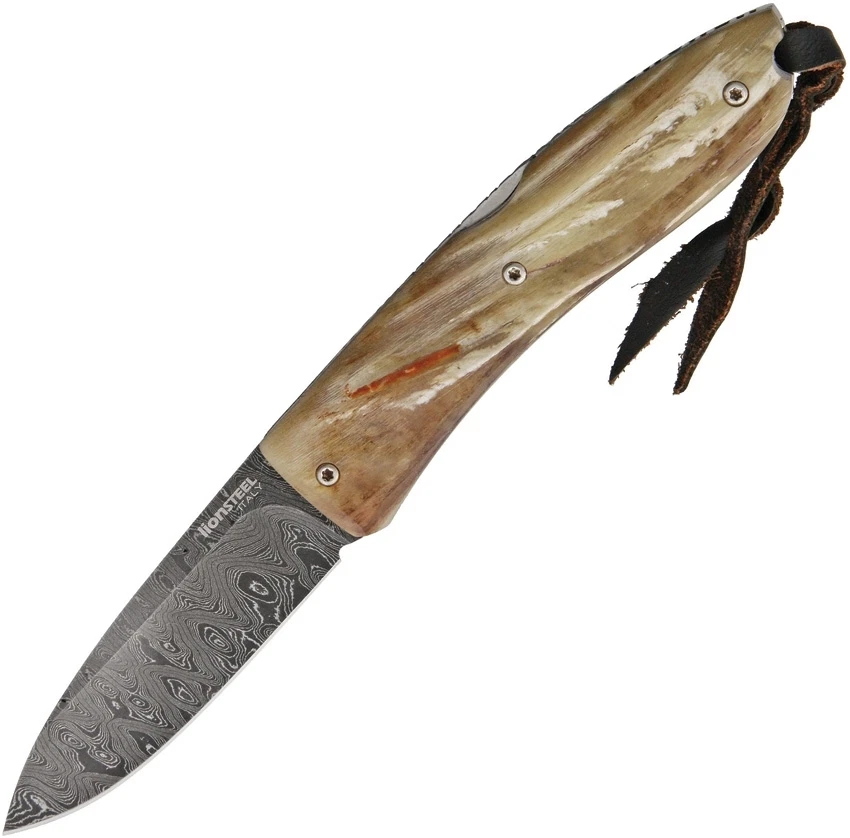
This Italian folding knife is a modern design from Lion Steel. It combines Damascus steel for the blade with ram’s horn for the handle. The knife stands apart from basic folding models because of the organic, uneven horn and layered Damascus blade. The 2.75-inch blade makes it practical, but the material choice elevates it as a collector’s piece. Market value is about $230 to $250 for new knives, while used examples may sell at $150 to $200.
Ram’s horn provides a rougher and wavier texture than bone, giving the handle a natural grip. Each piece of horn brings unique colors, ranging from pale cream to deep brown. Damascus steel adds visual interest, making the knife appealing as a functional yet artistic tool. Collectors value the tight folding action and durability of the horn handle. This knife blends usability with collectible qualities.
Antique Moroccan Koummya with Bone Handle
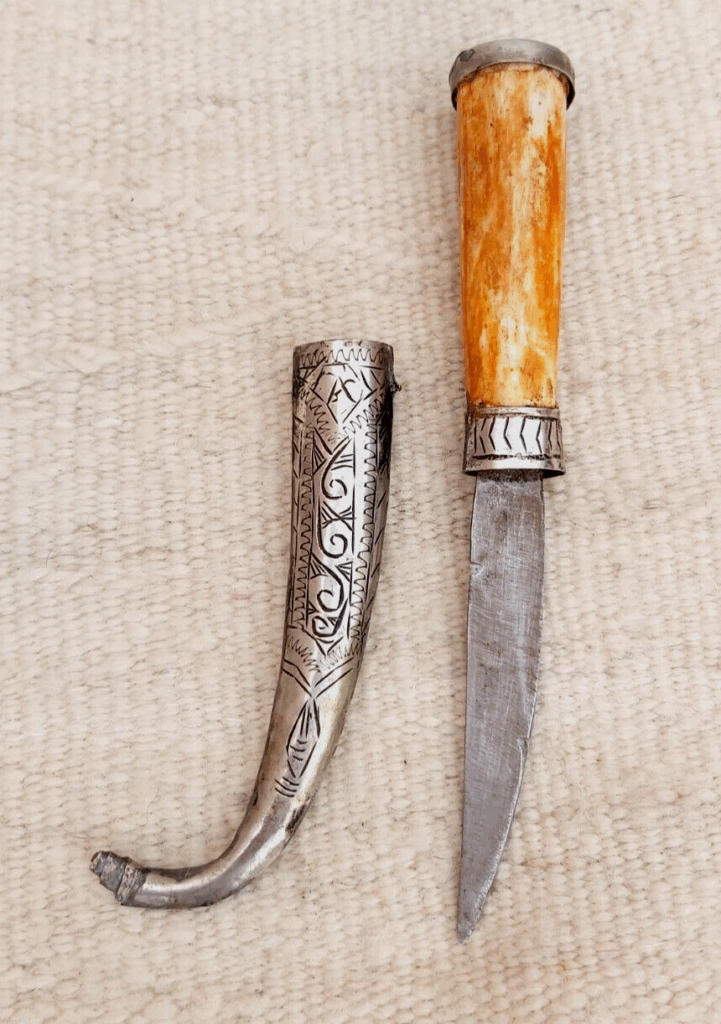
The Koummya dagger has been made for centuries in Morocco, often used for ceremonial and personal purposes. Many surviving examples date from the 18th and 19th centuries. The handle is carved bone, sometimes plain and sometimes detailed with decorative work. The curved steel blade and silver-plated scabbards make it stand apart from ordinary knives. Prices range from $80 to $200 for simple examples, while ornate silver and bone versions reach $1,000 to $4,000.
Bone as a handle material provides a smoother surface that can be polished. It gives an antique look compared with standard wood or synthetic handles. Koummya blades often feature engraved lines, making them more decorative than everyday utility knives. Collectors prize original matching sheaths and intact bone carving. These knives remain popular in auctions and antique shops.
Camel Bone and Damascus Hunting Knife
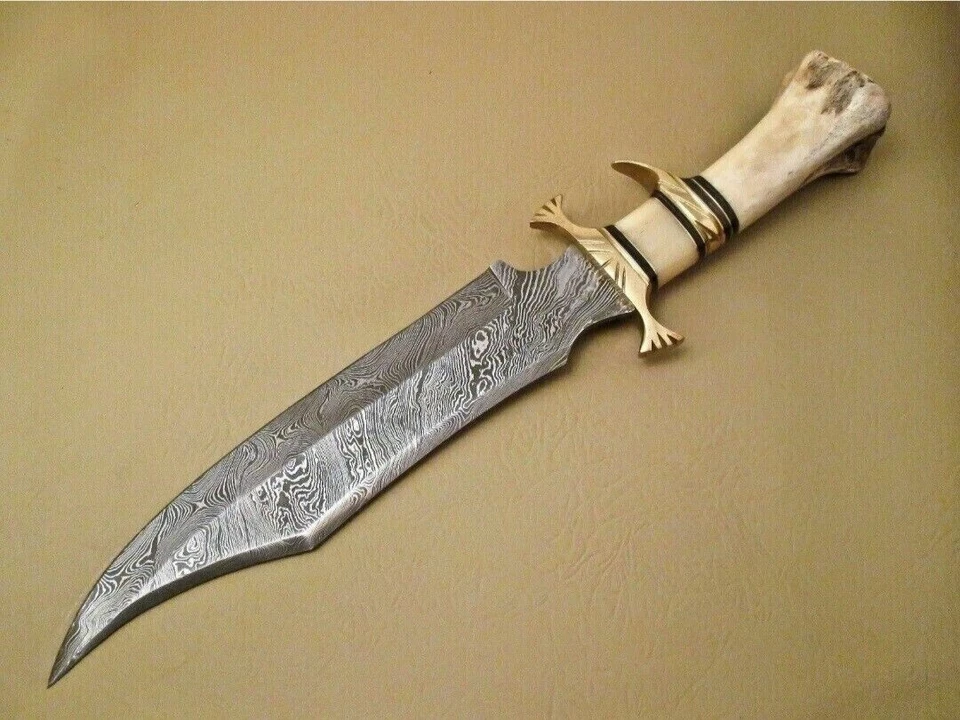
Modern artisans create hunting knives with camel bone handles and Damascus blades. Most examples are handmade and average 8 to 9 inches in length. The Damascus blade has visible patterns that set it apart from plain stainless steel. Camel bone handles offer a unique creamy hue and subtle natural streaks. These knives generally sell for $90 to $200, depending on the quality of the Damascus.
Camel bone is dense and can be polished to a smooth finish. It differs from wooden handles by offering a cooler, heavier grip. Damascus adds strength and beauty to the blade, making it both usable and decorative. Collectors often prefer knives with leather sheaths and solid tang construction. These pieces are sought by hunters and knife enthusiasts alike.
Indian Katar Dagger
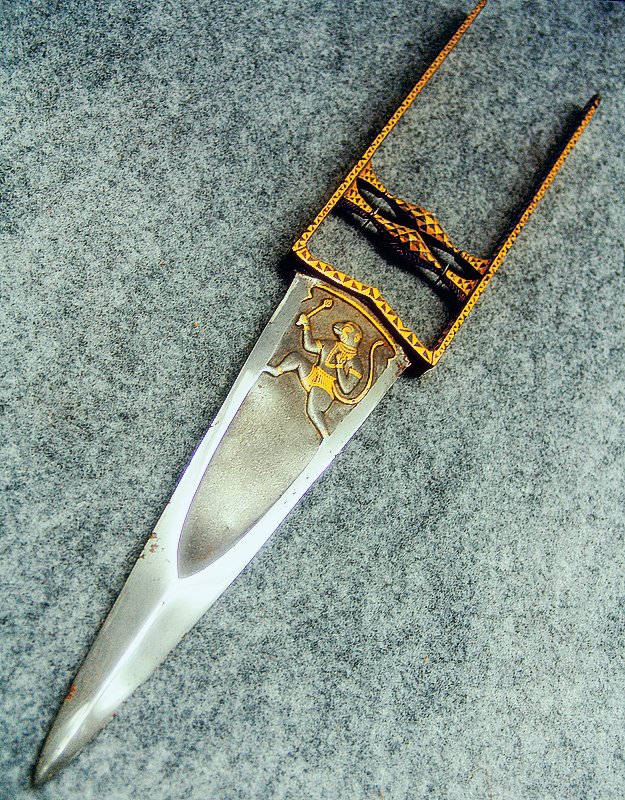
The katar is an Indian push dagger first produced in the 16th century. Some versions feature hilts crafted from jade, a highly prized stone. Unlike typical steel or horn handled daggers, jade adds durability and a semi-transparent sheen. The triangular blade makes the weapon distinct from common knives. Market values can range from $2,000 to $10,000 depending on quality and origin.
The jade grip sets these apart from other historical knives. Jade provides both strength and an ornamental finish. Katar blades often carry engravings or inlaid gold patterns. These knives were symbols of rank and wealth in India’s Mughal courts. Today, they are highly desirable in museum collections and antique markets.
Inuit Ulu Knife with Caribou Antler Handle
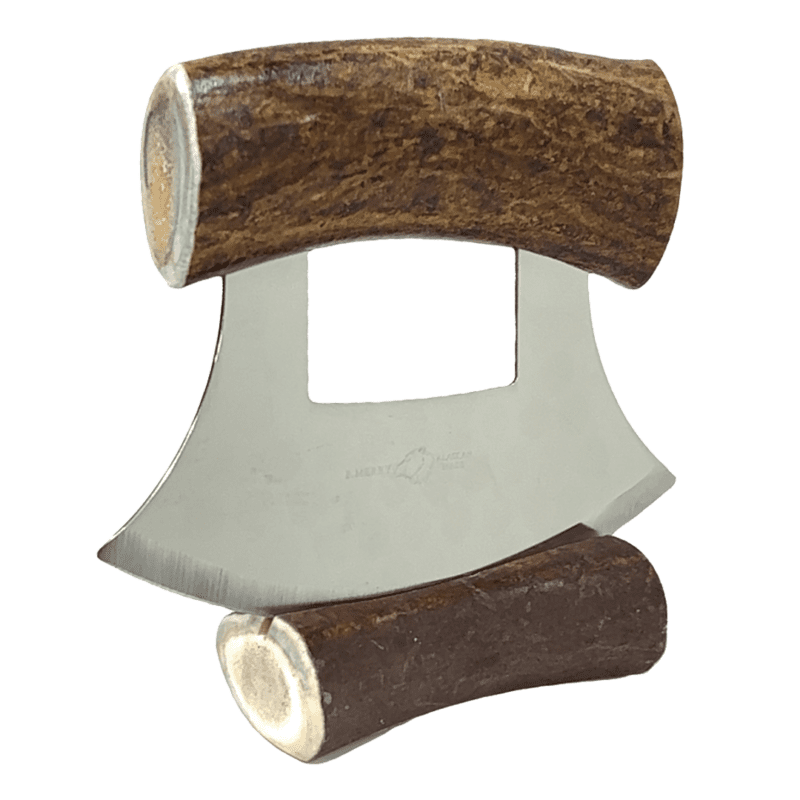
The ulu knife has been made by Inuit peoples for centuries. Handles are often carved from caribou antler, while blades are made of steel or earlier from slate. This differs from usual knives because the ulu has a curved blade designed for skinning, sewing, and food preparation. Antler handles are dense and durable, adding cultural identity to the tool. Market values for antique or traditional examples range from $150 to $600.
Modern versions may still use antler but sometimes switch to wood or composite. The antler grip provides cultural authenticity and unique markings. Unlike narrow hunting knives, the ulu’s wide blade is specialized for daily use in Arctic life. Collectors prize examples with original handmade blades. Ulus remain both functional tools and cultural artifacts.
Scottish Dirk with Stag Horn Handle
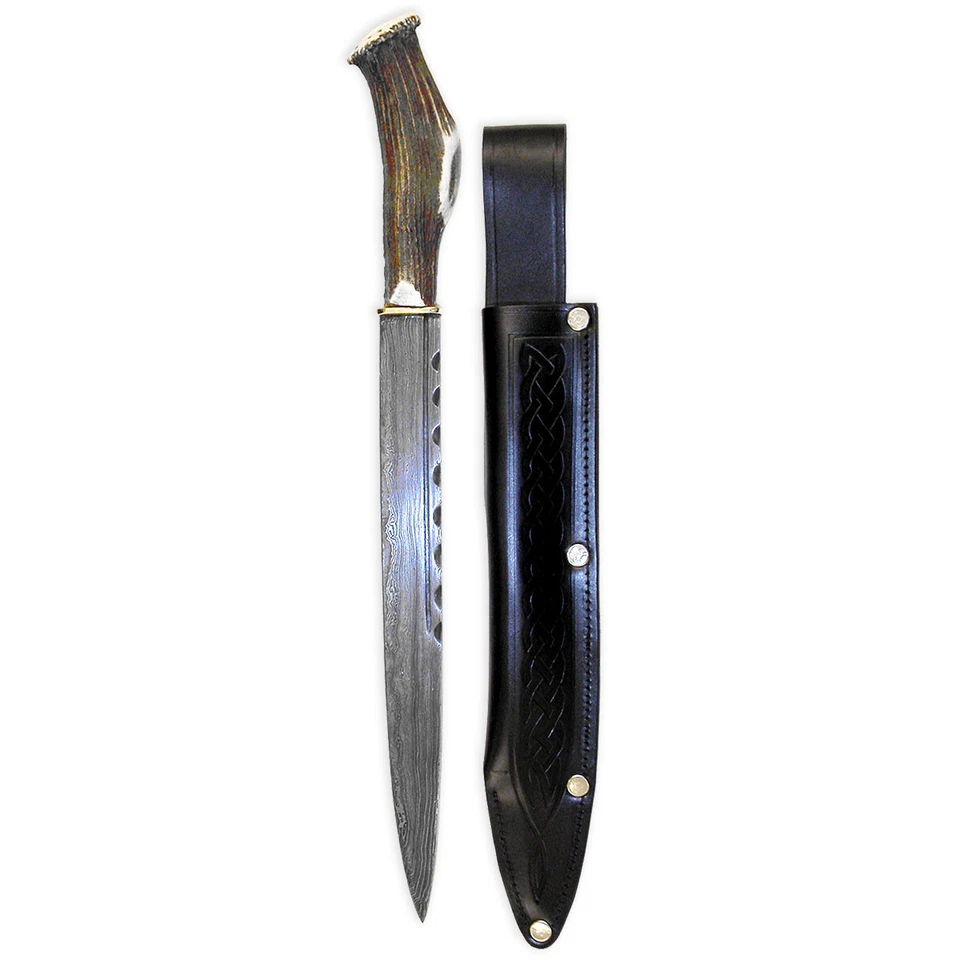
The dirk is a long Scottish dagger dating back to the 17th century. Traditional dirks often feature stag horn handles carved with Celtic patterns. This sets them apart from usual knives by their long tapering blade and decorative natural horn grip. Produced during clan warfare and ceremonial use, they hold historical importance. Antique dirks can fetch $500 to $2,000, with rarer pieces selling for much higher.
Stag horn provides both durability and a rough natural texture. Unlike smooth wooden grips, horn gives character and grip variation. Dirks are often matched with tartan scabbards and silver fittings. Collectors value intact horns without cracks and blades with original engravings. Today they are collected as symbols of Scottish heritage.
Japanese Aikuchi Tanto with Rayskin Handle
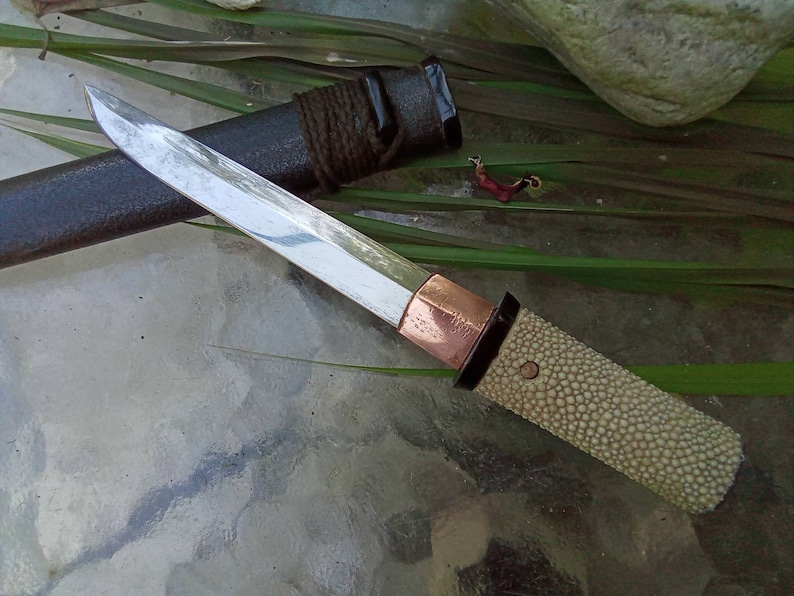
The aikuchi tanto is a Japanese dagger style without a guard. Many examples feature handles wrapped in rayskin, known as samegawa. This makes them different from standard wood-handled knives by adding a textured, durable surface. Produced mainly during the Edo period, these daggers are linked to samurai culture. Market value ranges from $1,000 to $6,000 depending on condition and provenance.
Rayskin adds both strength and grip to the handle. Unlike smooth grips, rayskin has tiny nodules that improve handling. The aikuchi tanto was designed for concealment and elegance rather than combat alone. Collectors prize daggers with original rayskin and lacquered scabbards. These knives remain popular in martial arts and antique markets.
Ottoman Yatagan with Walrus Ivory Grip
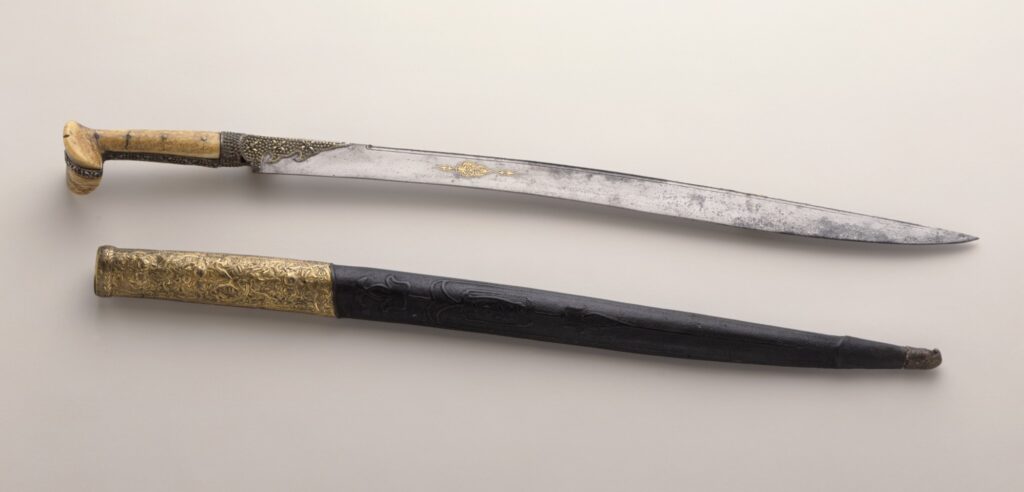
The yatagan is a traditional Ottoman blade dating from the 16th to the 19th century. Some examples have grips carved from walrus ivory, which is distinct from standard horn or wood. The blade is slightly curved, making it different from straight swords or knives. Market values range widely, from $1,500 to $8,000 depending on detail and ivory quality. These knives often include decorated silver or brass scabbards.
Walrus ivory adds rarity and prestige compared with common materials. The ivory is usually carved and polished, giving the handle a warm creamy finish. Yatagans are prized both as weapons and as ceremonial items. Collectors value provenance and intact ivory without discoloration. They remain among the most desired Ottoman arms.
Persian Khanjar with Mother-of-Pearl Handle
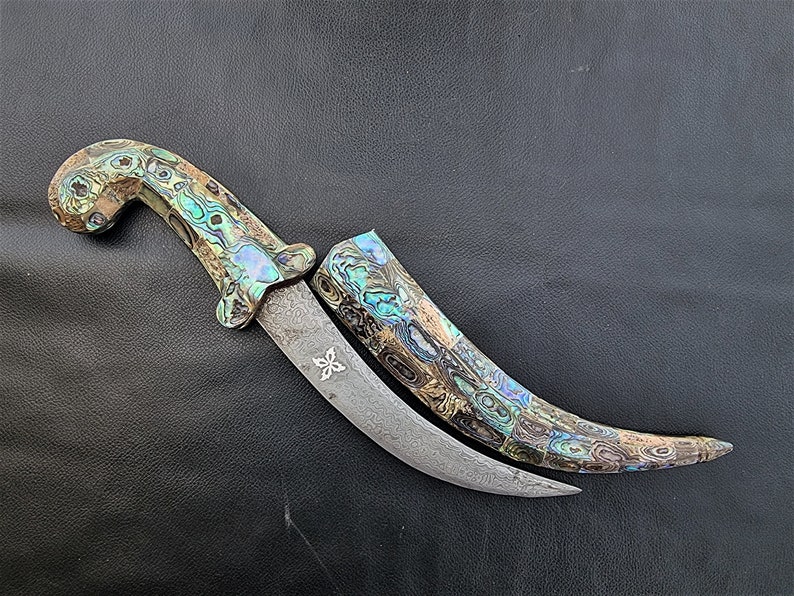
The Persian khanjar is a double-edged dagger with a distinctive curve. Some luxury models feature handles inlaid with mother-of-pearl. This material creates a shimmering effect that sets the knife apart from simple wood or bone grips. Khanjars with such decoration date from the 18th and 19th centuries. Prices range from $800 to $5,000, depending on condition and craftsmanship.
Mother-of-pearl brings a reflective surface that catches light. Unlike plain handles, it is delicate and decorative. These knives were often presented as gifts or status items. Collectors value pieces with intact inlay and original sheaths. The combination of steel blade and shimmering handle makes them stand out in auctions.
Nepalese Khukuri with Water Buffalo Horn Handle
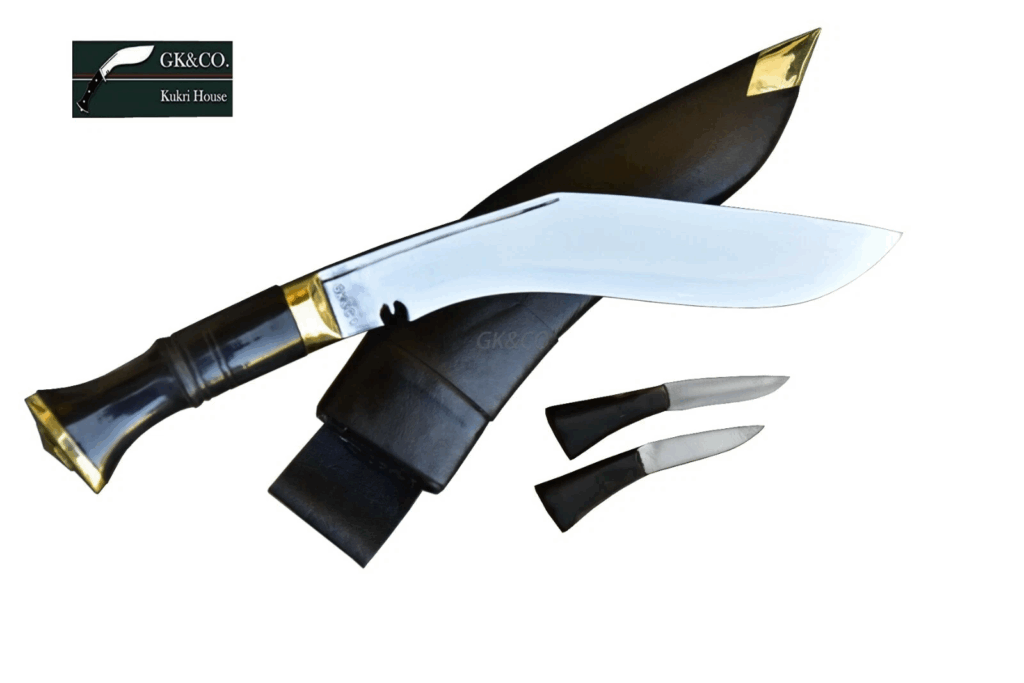
The khukuri has been produced in Nepal for centuries, famously carried by Gurkha soldiers. Many are fitted with water buffalo horn handles, making them distinctive compared with wooden or synthetic handled combat knives. The blade has a pronounced curve and notch near the hilt, unlike standard straight knives. Prices range from $100 to $600 for modern examples, with antique versions reaching $1,500 or more. Khukuris remain both tools and weapons with deep cultural roots.
Water buffalo horn handles are polished and dark, often almost black. This gives them a solid grip and traditional appearance. Unlike synthetic grips, horn may age with natural patina, increasing value over time. Collectors value knives with matching scabbards and historical markings. Khukuris with original horn grips remain popular among collectors and military history enthusiasts.
Horn, bone, ivory, and Damascus steel each add a character that stands apart from everyday tools. Their value is shaped by both cultural importance and the skill used in their making. Learning about these knives gives deeper insight into how materials shape identity and tradition.
This article originally appeared on Avocadu.
